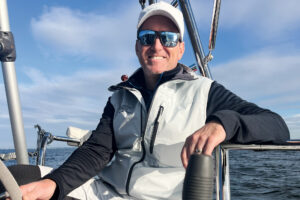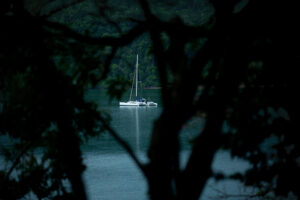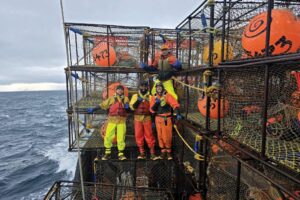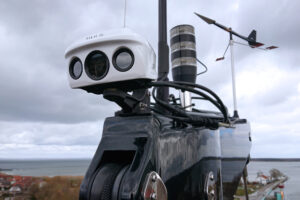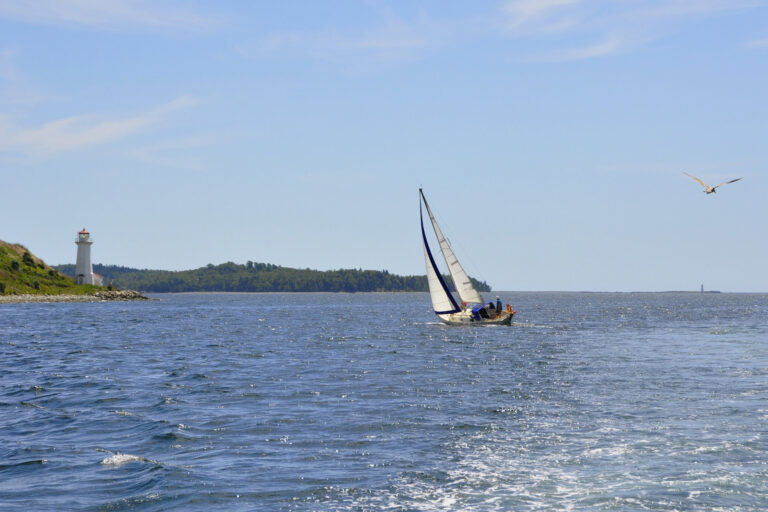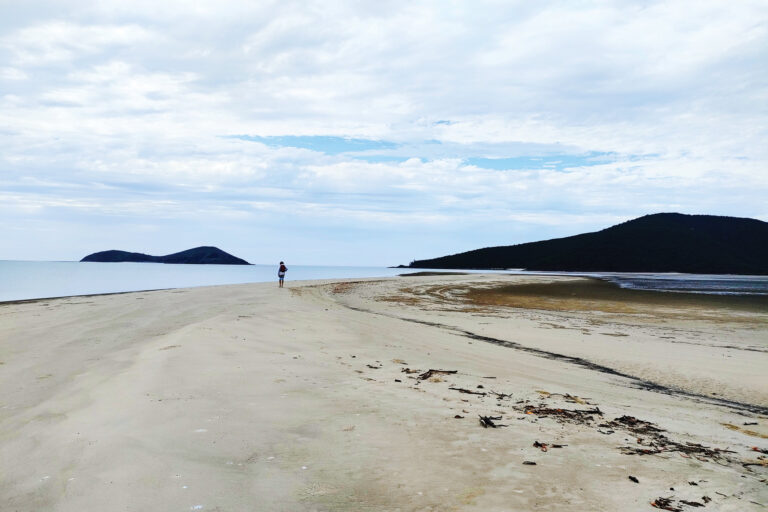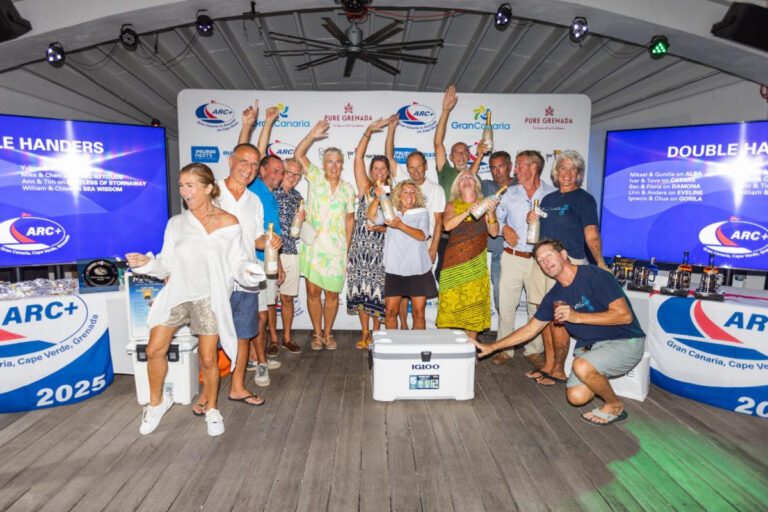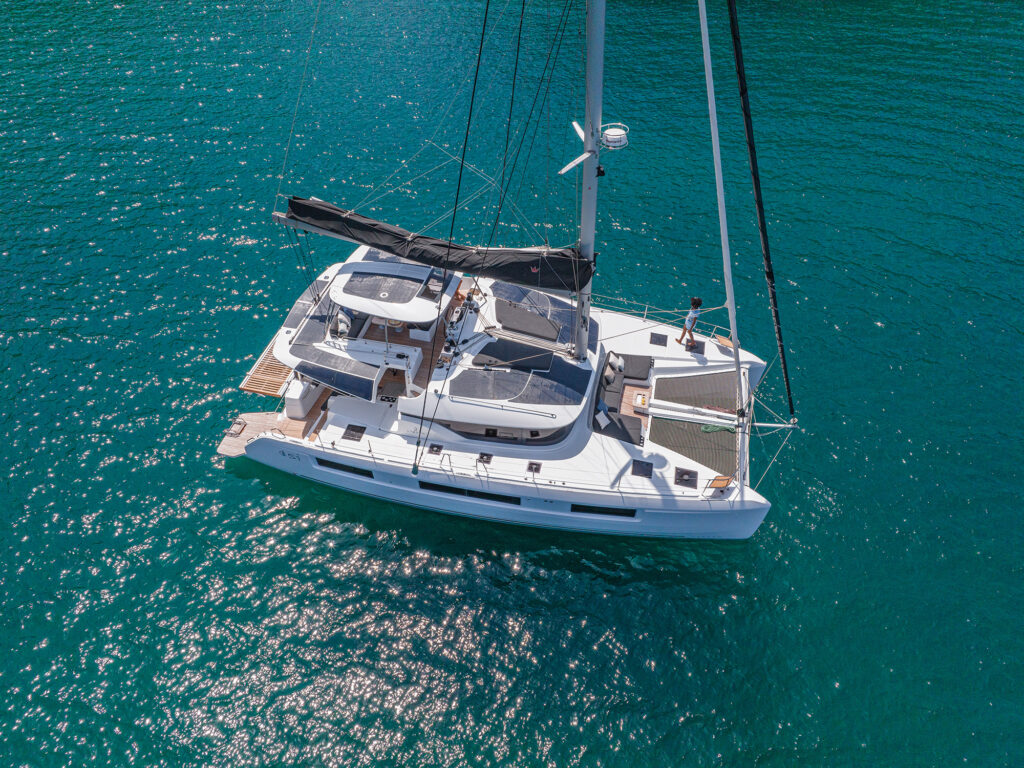
According to Kurt Jerman, head of West Coast Multihulls, the questions come hard and fast at a boat show anytime a lifelong monohuller is considering a move to the multihull side.
- Is multihull cruising really all that different from the monohull experience?
- In what ways?
- What are the key differences between catamarans and trimarans?
- Could a multihull flip over? Then what?
With the great debate between monohulls and multihulls having drawn on for decades, we sat down with Jerman to get some honest answers to questions he typically fields from the “cat curious” crowd.
CW: You often hear about the comfort factor of the multihull platform. What’s the root of that appeal?
KJ: The most noticeable thing about sailing a catamaran or trimaran versus a traditional monohull is the lack of heeling. Even when powered up, a cat or tri will rarely heel more than 5 to 10 degrees before it’s time to reef. Gone are the days of bracing yourself in the cockpit and living your life underway at 20 or more degrees of angle. In my opinion, it’s a much more relaxing and convenient way to sail. No question about that. There are a few exceptions when it comes to the newer breed of large performance cruising cats (which can heel 10-plus degrees), but these are still fairly fresh to the cruising market.
What can multihull owners expect in terms of speed and sailing performance?
Cruising catamarans will typically be 25 percent to 30 percent faster than a cruising monohull of the same length. You basically reach near-racing monohull speeds, but with all the creature comforts that come with a cat. Trimarans are an entirely different deal because they trend more toward the performance end of the spectrum, and can regularly double the sailing speed of monohulls on nearly any point of sail.

Keep in mind that catamarans and trimarans are, however, much more sensitive to loading. Performance will suffer more on a cat that is loaded for cruising than on a comparable monohull. Keeping the boat light can be difficult, but it is critical if fast passages are your goal. Reefing also becomes more important.
Sailing catamarans and, to a lesser extent, trimarans too, require vigilance when it comes to reefing. Because they don’t heel much, almost all additional wind force is converted to load on the rig. That’s where the speed comes from. But since the pressure on the sails quadruples as the windspeed doubles, crews must keep an eye on the weather and make sure to reef in good time to keep the boat safe and sailing flat. In fact, a properly reefed cat or tri will sail faster too, in freshening breezes. All manufacturers supply written guidelines denoting apparent-wind speeds that require additional reefing.
What about safety? And are multihulls really unsinkable, or is that a myth?
There are many aspects to safety where catamarans and trimarans shine. Often overlooked is the safety margin introduced with level sailing. It is much easier to keep crew aboard in rough weather when the boat stays level and is pitching less. Also, large cockpit spaces keep crew better protected and situated well away from the lifelines.
The speed of a multihull is another safety factor. With decent weather information, it’s relatively easy to sail around severe weather systems before they can bear down on you. Should something go horribly awry and the boat gets flipped—which is highly rare and requires extreme circumstances—the lack of ballast and additional positive flotation means that nearly every catamaran and trimaran produced in the past few decades will remain on the surface of the water, right side up or not, until a rescue can be made. Nearly all cruising cats and tris have a substantial amount of reserve buoyancy, in the form of closed-cell foam, stashed in the nooks and crannies of the boat. Because of this, most of these boats could literally be cut into pieces, and all of those pieces would still float.
How do multihulls handle under power and in close quarters?
Cruising catamarans and trimarans, with their easily driven hull forms and light weight, enjoy excellent fuel efficiency when compared with monohulls, and track very straight. Cats almost always have twin engines, set many feet apart, which allows for tremendous control in tight situations. In fact, the boat can be spun in place or crabbed sideways without any way on. Try that on a monohull.
Prop walk is minimal or nonexistent as well, and the redundancy of a second engine is appreciated should a mechanical issue arise underway. Nearly all trimarans have just one engine, so the differences there are slight.
How much gain can boaters expect in usable living space?
Typically, a catamaran will have the volume below equivalent to a monohull 10-plus feet larger. When combined with added cockpit space, possibly a flybridge, and more than doubling the deck space, it becomes a whole different ballgame. It’s important to note that you not only gain a tremendous amount of space, but nearly all of that space is very livable and comfortable as well, whether at anchor or underway.

However, trimarans don’t show an increase in interior volume, and in fact tend to be smaller below than monohulls of the same size. This is mitigated some by the additional stowage in the amas and added net space, but the narrower, performance-oriented main hull tends to be less than palatial.
How can multihulls get away with such shallow drafts?
Because a multihull’s stability comes from the beam and extra hulls—form stability—there is no need for ballast or a substantial keel. This reduces overall weight and, importantly, draft as well. It is common for a 40-plus-foot cruising cat to have a draft less than 4 feet, allowing sailors to explore shallow areas where monohullers fear to tread. Belize, the Bahamas, the Great Barrier Reef? No problem. Gunkholing around Mexico and the Chesapeake is easier too.
If you have some quick underwater maintenance to do, such as replacing prop-shaft seals, zincs or a through-hull, most cats can be dried out at low tide on a flat area of sand or solid ground, resting happily on their stubby little keels. You can also nose right up to that perfect beach if the weather allows.
Trimarans typically have no keels at all, and instead rely on a centerboard to prevent leeway, making them perfect for beaching. Boom-tent camping, anyone?
What if it flips?
While a scenario like this is theoretically possible and has happened in very rare, heavy-weather situations when any vessel would be in distress, it takes very high winds, too much sail (see reefing, above), and large breaking waves to flip a modern cruising cat or trimaran.
Multihull sailors might find it reassuring to know that their cat or tri will remain on the surface, as a big life raft and highly visible spotting target.

